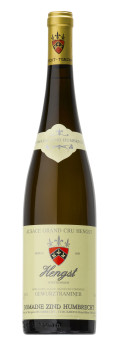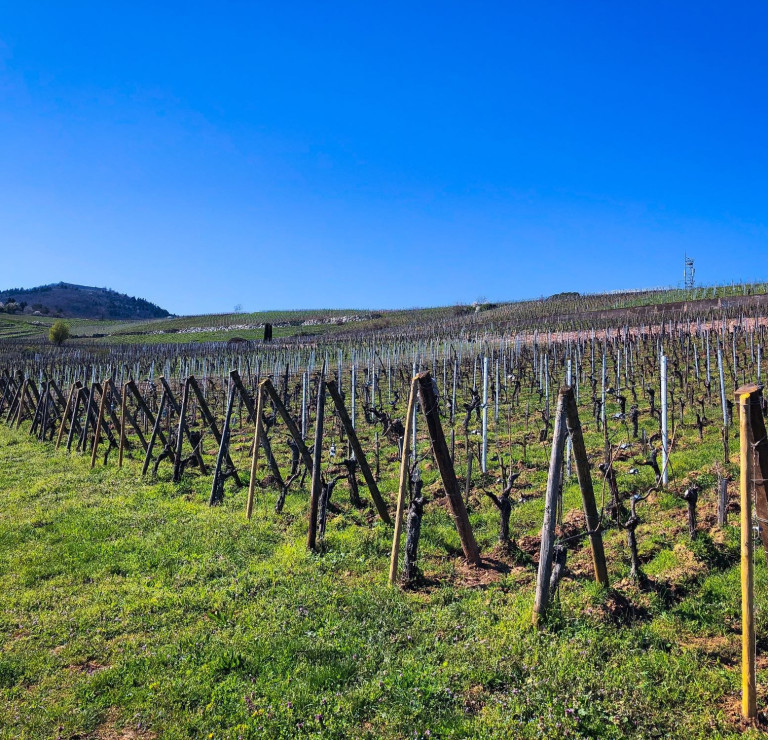
Technical presentation
| Bottling : | August 2013 |
|---|---|
| Acquired alcohol : | 15° |
| Residual sugar : | 41.0 g/l |
| Total acidity : | 2.3 g/l H2SO4 / (3.6g/l Tartrique) |
| pH : | 3.9 |
| Yield : | 27 hl/ha |
| Optimum tasting : | 2017-2042+ |
| Average age of vines : | 61 years |
| Terroir : | Grand Cru Hengst |
| Sweetness index : | 4 |
| Soil : | Marl, Oligocene calcareous , South/South East facing, medium/steep slope |
Description of the wine Gewurztraminer Grand Cru Hengst 2012
Only the two oldest vineyards, planted pre WW2 and in 1957, are used to produce our Hengst Grand Cru. They are also located in the middle of the Grand Cru, mid slope, enjoying a south, south-east exposure. The young aggressive Oligocene limestone is only a foot deep under a relatively thin top soil made of marl. The Hengst also enjoys a warm and dry climate, allowing the grapes to achieve perfect phenolic ripeness without fearing early rot. Nobel rot is also quite rare in this vineyard and wasn’t much present in 2012. The fermentation was quite powerful and fast, which is typical of this vineyard.

Tasting notes
02/2014 : The Hengst shows a pale gold colour, slightly darker than the other wines in this pale coloured vintage. Light citrus fruit struggle to fight the big massive spicy, limestone influenced flavours (light tar, smoke, wet stones). The nose actually becomes more refined with time as it takes a few hours in the glass to lose the reductive influence of the lees. The attack on the palate is gradual and powerful. The big structure covers the entire mouth with an intense, unctuous and dense long lasting wine. The sweetness seems to disappear; the wine is touching the palate almost like a round red wine. True Hengst.

The Hengst Grand Cru of Wintzenheim
The Hengst was first mentioned in the 9th century in an endowment of the Murbach Abbey. The lord of Haut Landsbourg as well as the bailiff of Kaysersberg shared the feudal rights up to the Great Revolution, whilst various noble families, abbeys and the bourgeoisie of Colmar exploited important parcels.